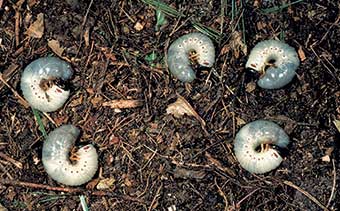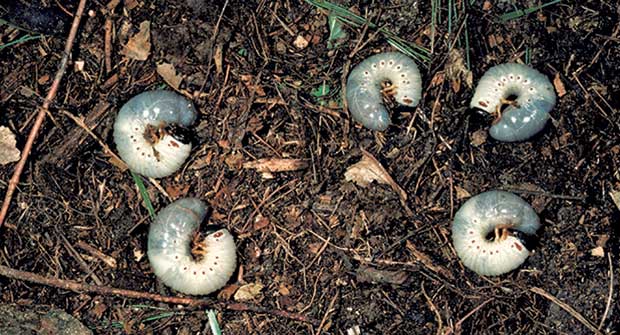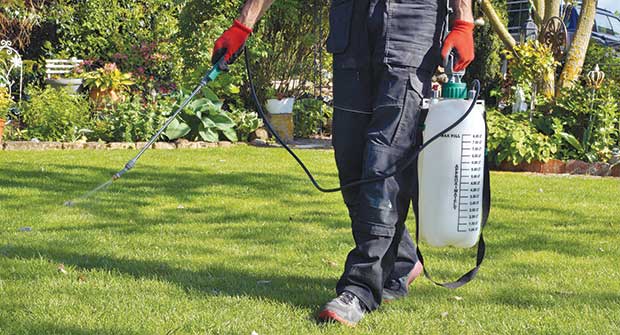
Grub control is a great service upsell for clients, says Andrew Bowman, co-owner of Bowman’s Pro Turf in Brazil, Ind.
“Grub control programs for lawn care professionals are an easy way to sell an additional and very important service to your existing customer base,” he says. “You are typically already treating the customer as part of your routine maintenance program, and an upsell that provides benefit and peace of mind to clients is well worth it.”
Bowman’s Pro Turf charges $75 per application for grub control on top of the $75 service fee for weed control and fertilization for its 95 percent residential clientele.
Bowman’s Pro Turf provides strictly lawn care services.

“Customers also appreciate the fact that the service can be completed at the same time as their regular application,” he says. “(They) understand their bill for this one application will be higher than others but see great value when multiple services are checked on their invoice.”
This year, Bowman sent a renewal letter to his prepaid clients and offered grub control as an add-on service. He offers a discount if customers pay upfront, and he matched his upsell numbers from previous years with little effort.
“I view grub control programs as more of an insurance policy,” he says. “Many of our customers have never experienced the damage that grubs can truly cause in their lawn. The customers who have know and understand the destruction that can be caused by both the grubs feeding on the root system of the turf and by animals foraging for food.
“Once the damage is done from a grub infestation, the cost of a post-grub-control application and lawn repair is multiple times the cost of an initial grub preventive program.”
Time your applications

Grub damage can look like other turf issues, says Tony Goldsby, Ph.D., director of professional turf products for The Andersons.
“Damage to the turf can look very similar to other summer stressors and may be mistaken for drought stress on well-watered turf,” he says. “Preventive grub control is important to ensure damage doesn’t occur to high-profile turfgrass areas like home lawns.” He recommends applying a preventive insecticide like imidacloprid for grubs.
Lawn care professionals can achieve better efficacy by applying preventive grub control insecticides before damage happens or before larvae hatch, says Matt Giese, technical services manager for Syngenta.
“Spring or early summer applications timed around adult egg laying can help introduce the active ingredient when small larvae hatch and begin to feed,” he says. “This can result in a high level of control compared to late summer or early fall application when grubs are larger and more difficult to control.”

says that lawn care providers could prevent multiple turf insects with a spring application of a product containing broad-spectrum chlorantraniliprole. It’s critical to get the insecticide into the thatch as grubs feed on the roots of the turfgrass, he says.
“Rainfall or irrigation after an application is useful for insecticide activation,” he adds. “Because the target zone for grubs is below the soil/thatch interface, moving a foliar-applied treatment from the foliage to the soil is necessary to reach where the insect is feeding.”
Preventive products with thiamethoxam may offer some flexibility as the product has a five- to seven-day window for watering in.
In addition to product and irrigation considerations, timing is also key. Bowman says when it comes to treating the turf, it’s important that lawn care professionals understand the proper timing of the applications based on the service area. He times grub prevention in late spring and early summer and grub control in late summer and early fall, since an application too early or too late may not be effective.


